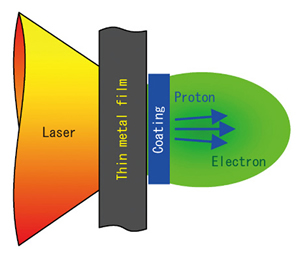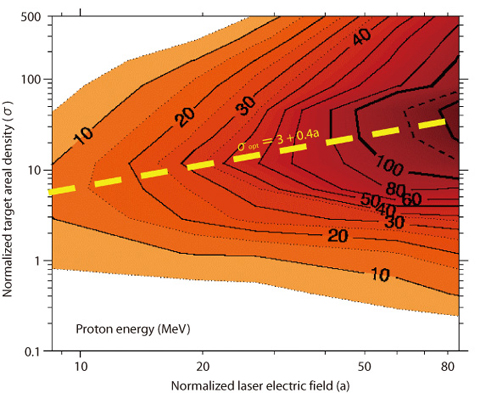
Fig.4-28 Schematic diagram of the double layer target

Fig.4-29 Multiparametric simulation results
The method of laser acceleration by using intense laser light is very attractive, since the acceleration performance is markedly higher than standard large accelerators and the device size could be much more compact (1/10~1/100) than present facilities in existence. Currently, proton acceleration experiments using high power lasers close to petawatt levels are going on vigorously all over the world to develop a compact cancer therapy machine. Finding the optimum conditions for the laser parameters and designing targets of micron order thickness only by experiments are, however, very difficult.
Therefore, in this study a simulation program has been developed to thoroughly survey the optimum laser and target conditions by using super computers at JAEA.
Fig.4-28 is a schematic diagram of the double layer target adopted in our simulation. The double layer target as a tool for hadron therapy, which was first suggested by S.V. Bulanov and V.S. Khoroshkov, is composed of a coating of light matter (low atomic number (Z)) on the back side of a thin metal film target. Due to laser irradiation of the target, high energy electrons are generated. As a result, an electrostatic field is induced and low-Z matter (protons in this case) can be efficiently accelerated.
Fig.4-29 shows multiparametric simulation results of the proton energy with the laser intensity and the target thickness and electron density as parameters. Contour lines of the proton energy are plotted in the plane of the laser strength (a) and the target areal density (σ) which is the product of the thickness and the electron density. It has been found that to attain a given proton energy the necessary laser strength (a) can be minimized by appropriately choosing the target areal density (σ) and that the optimum relation between a and σ is given by the scaling law of σopt ~3+0.4a.
The present result, indicating that the laser intensity needed to trigger the proton energy generation can be reduced, leads us closer to the realization of a laser driven cancer therapy machine. Further research and development to achieve more realizable experimental parameter values and laser systems for the realization of a small laser driven cancer therapy machine will be undertaken at JAEA.